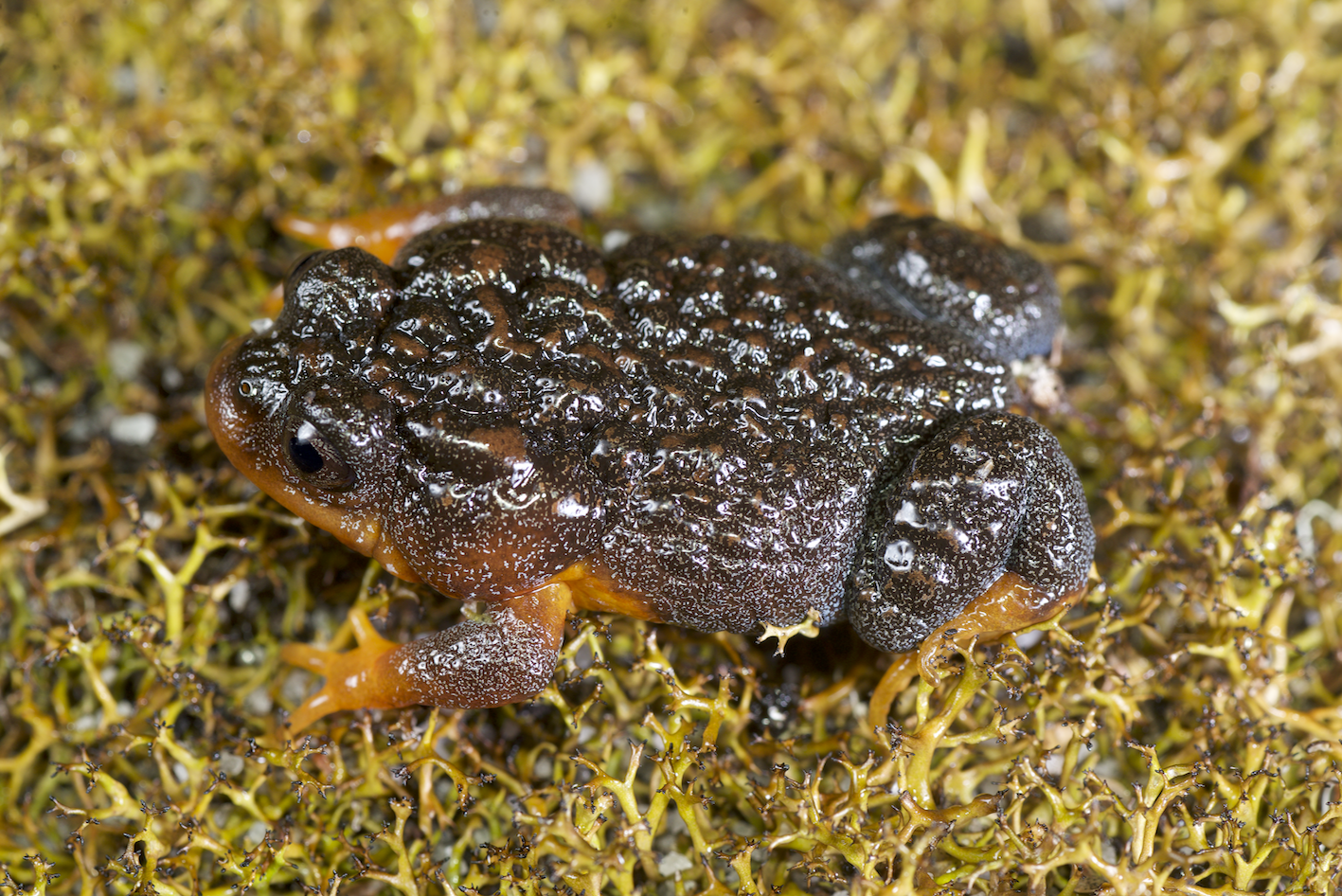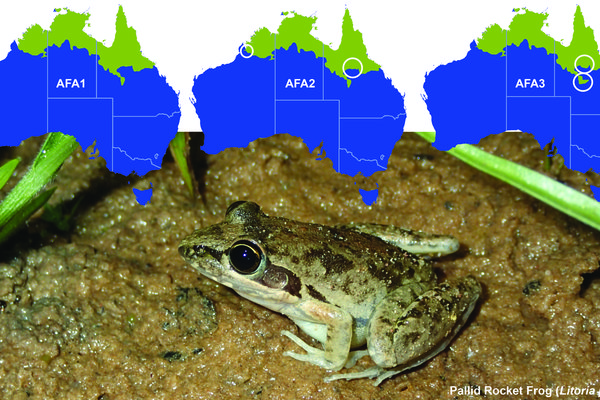FrogID Week 2021 – over 37,000 frog records thanks to thousands of citizen scientists
Using the FrogID app is not just a joyful pastime. It is rapidly gathering the information we need to help understand and conserve Australia’s frogs.
FrogID is the Australian Museum’s national citizen science project, allowing anyone with a smartphone to record and submit frog calls through the free FrogID app. Every recording is listened to by one or more frog call experts at the Australian Museum. These expert-verified, geo-referenced frog records help fill important knowledge gaps across the country, building a better understanding of Australian’s frog species, many of which are threatened. FrogID Week is the FrogID project’s annual snapshot of frogs to help better understand trends over time. The fourth FrogID Week was held in November 2021 - it has once again beaten previous year’s records and gathered data for frog conservation on scales never before possible.
The power of citizen science
Frogs are one of the most threatened groups of animals on the planet and in Australia, many species are in decline. Unfortunately, there is still so much we are yet to understand about our unique frog species. As the threats that face them increase, so too must our data collection to understand where frogs live and breed, and how we can better protect them. Between 12 and 21 November in 2021, the fourth FrogID Week event by the Australian Museum saw record numbers of scientific records of frogs collected - over 37,000 frog records in just ten days. The 12th of November 2021 received the highest number of FrogID records per day to date, with 6,127 frogs recorded in just 24 hours – that’s more than four frog records per minute! Greater spatial coverage was also achieved, with FrogID Week 2021 records covering 14% of Australia, up from 10% during FrogID Week 2020.
Fuelling these accomplishments were citizen scientists of all ages across Australia, rapidly gathering data on frogs by recording their calls with the free FrogID app. Over 20,000 submissions were received from over 4,600 participants. FrogID Week 2021 saw a greater number of frog records in every state and territory compared to any other FrogID Week events in the past, and Queensland experienced the greatest rise - submissions from the sunshine state increased ten-fold with 10,822 records (up from 1,867 the previous year). The passion and commitment from FrogID Week contributors led to another great milestone during 2021 – the project itself reached over half a million records of frogs! In other words, the number of scientific records of frogs available in Australia more than doubled thanks to the first four years of the FrogID project. It is with the help of thousands of FrogID citizen scientists that we can cover far greater ground than a handful of experts could achieve on their own in many lifetimes, in turn providing a powerful resource for scientists and land-managers to make more informed conservation decisions.

FrogID Week 2021 results
Image: Australian Museum© Australian Museum
A growing scientific database for conservation
FrogID is gathering scientific records of frogs on unprecedented scales. Since the FrogID project began in 2017, the project has received over 375,000 submissions from the public, resulting in over 590,000 frog records across 210 species (85% of Australia’s known species of frog). A total of 113 species were recorded during FrogID Week 2021 as opposed to 103 in the previous year. This included our first FrogID recording of the Sunset Frog (Spicospina flammocaerulea) – a Vulnerable species recorded by Robert Davis from southwest WA. Recordings of the newly scientifically recognised Australian frog species, the Slender Bleating Tree Frog (Litoria balatus) and the Screaming Tree Frog (Litoria quiritatus) also made appearances during FrogID Week 2021. For these two new species, thousands of FrogID recordings were used to assess the very subtle differences in their calls, highlighting the valuable way in which participating in FrogID can contribute to new species discovery (read more). Through FrogID, the growing information we are gathering is revolutionising our understanding of frogs – not only are new species being discovered, data on rare and threatened species are being collected (without disturbing frogs or their habitat!) and invasive species are being detected, demonstrating the powerful growing resource that FrogID has become with high implications for conservation.

Sunset Frog (Spicospina flammocaerulea)
Image: Tom Parkin© Tom Parkin
The intense snapshot achieved through every FrogID Week event also allows us to document the potential decline of native frog species and understand the population level impacts of devastating events. This was illustrated following FrogID Week 2020 when recordings from burnt habitat helped inform how Australia’s frogs are persisting following the devastating black summer bushfires of 2019-2020 (read more). FrogID recordings from fire-impacted areas continue to inform us of the long-term impacts now. Of recent significance, FrogID Week 2021 is helping us understand how frogs are responding to the unfortunate frog mortality event that began to sweep across Australia during winter 2021 (read more). Worryingly, 23% fewer recordings of the Peron’s Tree Frogs (Litoria peronii) were captured during FrogID Week 2021 than the previous year, when masses of sick and dying frogs were not yet being reported. This species was the second most reported species to be dead or dying during the winter 2021 frog mortality event, and with over 40 different species reported dead or dying during the winter in total, further investigation is required to determine the toll this has had on frog populations.
This is where regular FrogID submissions and future FrogID Week events become even more crucial as they importantly help inform us how frogs are faring over time. With the important roles that frogs play in our environment, from tadpoles helping keep our streams clean, to supporting other animals in the ecosystem as a vital food source, using the FrogID app is not an ordinary pastime activity – our actions to record frog calls with FrogID directly inform the future of our threatened frog species and the health of our environment.

Eastern Dwarf Tree Frog (Litoria fallax) submitted during FrogID Week
Image: Vicky Mills© Australian Museum
Congratulations to our FrogID Week 2021 Top Frogger
We would also like to thank and congratulate Vicky Mills from the Karana Downs in QLD for winning our FrogID Week 2021 Top Frogger competition. Vicky submitted a total of 375 recordings, resulting in over 400 records frogs - not bad for a first time ‘frogger’! Thanks to our FrogID Week prize partners Australian Geographic and Vegepod, Vicky won a prize pack valued at $1100. We appreciate all the valuable contributions made towards frog conservation through FrogID Week and thank everyone for taking part.
Nadiah Roslan, Project Coordinator: FrogID, Australian Museum Research Institute.
More information:
For scientific outputs of FrogID, visit https://www.frogid.net.au/science
For information about FrogID Week 2022 (11-20 November), visit https://www.frogid.net.au/frog-id-week
To become a FrogID Week partner, contact our Partnerships team on (02) 9320 6450, partnerships@australian.museum
Acknowledgements
Thank you, NSW Biodiversity Conservation Trust, for supporting FrogID Week 2021. We would also like to thank the Citizen Science Grants of the Australian Government and the Impact Grants program of IBM Australia for providing funding and resources to help build the FrogID App; the generous donors who have provided funding for the project including the Vonwiller Foundation; the Museum and Art Gallery of the Northern Territory, Museums Victoria, Queensland Museum, South Australian Museum, Tasmanian Museum and Art Gallery, and Western Australian Museum as FrogID partner museums; the many Australian Museum staff and volunteers who make up the FrogID team; and, most importantly, the thousands of citizen scientists across Australia who have volunteered their time to record frogs.













